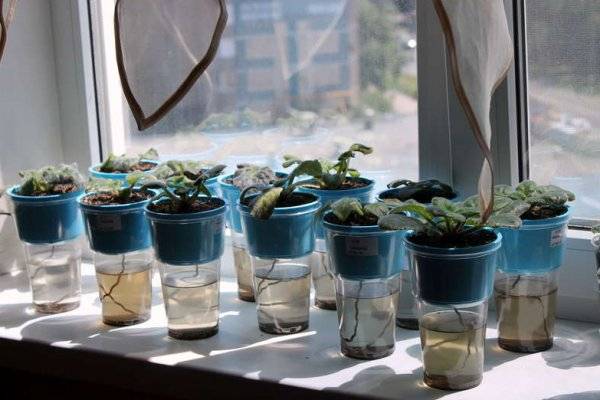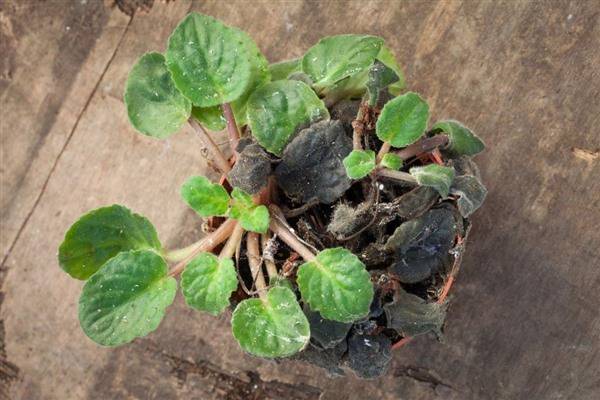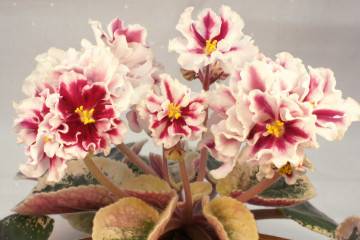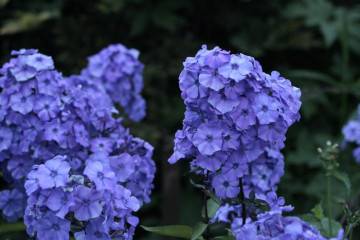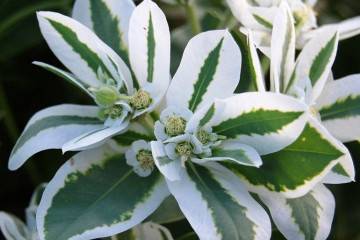Violet Ness Crinkle Blue - plant features
Content:
Violet Ness Crinkle Blue belongs to the hybrid varieties of the species. Taking proper care of the plant will allow you to enjoy flowering almost all year round.
What a violet Ness Crinkle Blue looks like
The variety is recognized as one of the best in the entire history of breeding.
Plant characteristics
Violet Ness Crinkle Blue is a semi-mini variety with dark green, quilted and jagged foliage. At the end of the sheets there are pointed tips, the sheet plate is velvet. The rosette is neat, with a diameter of 14 cm.
What family does it belong to
The Uzambar violet belongs to the Hesperia, a genus of hybrid Saintpaulias.
Briefly about the history of appearance
The species was registered in 1995. Selection work was carried out by D. Ness. The name translates as "blue curls".
Characteristics and features of Ness varieties
The varieties of the line are presented:
- Crinkle Blue or "blue fold" - has dark blue flowers with a thin white border.
- Orange Pekoe or "orange tea" are semi-double or double flowers of a coral shade; the peculiarities of the ness orange pekoe violet include the independent formation of a neat rosette, ideally symmetrical.
- Satin Rose or "satin rose" - the double petals have a pink-silver-lilac shade, the tips are darker.
- Spring Blush or "spring blush" - refers to chimeras, has simple and semi-double flowers, multi-petaled, with an unusual shape, pink stripes with purple strokes are visible on the main white color.
- Blueberry Puff or "blueberry puff" - blue flowers with a slight haze and pink spots, giving the impression of sun bunnies.
- Tiny Flame or "little flame" is a miniature species with double, bright magenta buds.
- Pink Confetti or "pink confetti" is a semi-miniature type with simple or semi-double pink flowers and a thin border of color function.
- Red Velvet or "red velvet" are simple, bright red, large buds.
- Angel Face - light fuchsia bells with white tips, is a semi-miniature species.
- Antique Red - or "antique red" - is characterized by double dark red flowers.
- Fantasy Gold is interesting for its original color: rings of yellow, pink and fuchsia shades are superimposed on each other, wavy black leaves are considered a feature.
- Blueberry Kiss or "blueberry kiss" - has large, up to 6 cm in diameter, wavy blue flowers, with a large white eye.
Features of caring for a violet Ness Krinkle Blue at home
If the recommendations are followed, the plant will delight with the first flowers in 5-6 months. Ignoring the requirements for the regime can cause illness and death of the flower.
Temperature
The optimal indicator is from 20 to 24 degrees.At this temperature, violets bloom massively and for a long time, grow strong and vigorous.
Lighting
The plant prefers diffused light, with a lack of it, it refuses to bloom. On the sunny side, the violet must be shaded to avoid burns.
Watering
Produced after the earth dries up. Water is poured into a tray, after 20 minutes the excess is removed.
Spraying
The description indicates that the procedure can cause rotting of the green part and the root system. Spraying is not carried out.
Humidity
The ideal rate is 50 to 60%. With the right temperature and watering, humidity can drop to 30-40% without harm to the flower.
Priming
Preference is given to ready-made store mixes, airy and easily retaining moisture. Violets need good drainage from expanded clay or foam crumbs.
Top dressing
Liquid complex fertilizers intended for decorative flowering indoor plants are used 1-2 times a month. Top dressing is combined with watering.
When and how it blooms
Violets are often flowering species, and the number of buds depends on proper care.
Types of flowers
Terry flowers with a dark blue tint, without an admixture of purple, with a diameter of 3 cm. They bloom gradually, the color is in perfect harmony with dark leaves.
Flower shapes
Terry flowers have a scaly shape, flowering is friendly. The problem is weak peduncles that cannot support the weight of the buds. They cover the leaves by leaning on them.
Flowering period
The violet is considered a constantly flowering variety that occasionally rests during the winter. New buds appear every month.
Changes in care during flowering
To increase the time, experienced florists recommend removing some of the lower leaves. The procedure not only helps to prolong flowering, but also to form a perfect rosette.
How the Ness Crinkle Blue violet reproduces
Reproduction is carried out in sheets. A strong and healthy one is selected, the cutting is incised at an angle of 45 degrees. The leaf is sent into the water and is in it until the first roots appear. Later, the plant is rooted in the ground.
Transplant after purchase and during reproduction
Transfer work is carried out by transshipment - so as not to damage the root system. The pot should be 2/3 of the flower size. The bottom is lined with drainage, a layer of new soil. After moving the violets, the voids are covered with earth.
When propagating, leaves with roots must be rooted in the ground, watered. You can make a greenhouse from a film - to accelerate the growth and development of the flower. After the formation of the baby, the plants are sent to a permanent pot and transferred to the windowsill.
Possible growing problems
The main difficulties with violets are caused by violations of the requirements for care.
Leaf problems
Plaque, foliage folding occurs due to:
- rust;
- powdery mildew;
- direct contact with sunlight.
Pests
Violet is often attacked by:
- mealybug;
- cyclamen or spider mite;
- aphid.
Diseases
Common diseases include:
- gray rot or botrytis - with a fluffy bloom on the surface of the leaf plates;
- vascular bacteriosis - with wilting and weakness of foliage.
Signs of improper care
Over-watering causes the following problems:
- loss of attractiveness;
- drooping leaves;
- dull color of leaf plates;
- dying off of the root system.
The reduced immunity allows insect pests and fungal infections to attack the violet easily. The brown shade of the foliage with its massive fall is provoked by Fusarium, which develops at low temperatures and excessive soil moisture.
It does not matter what kind of Saintpaulia you decide to purchase. If the recommendations for care are not followed, the plant will start to hurt, and will die over time.



